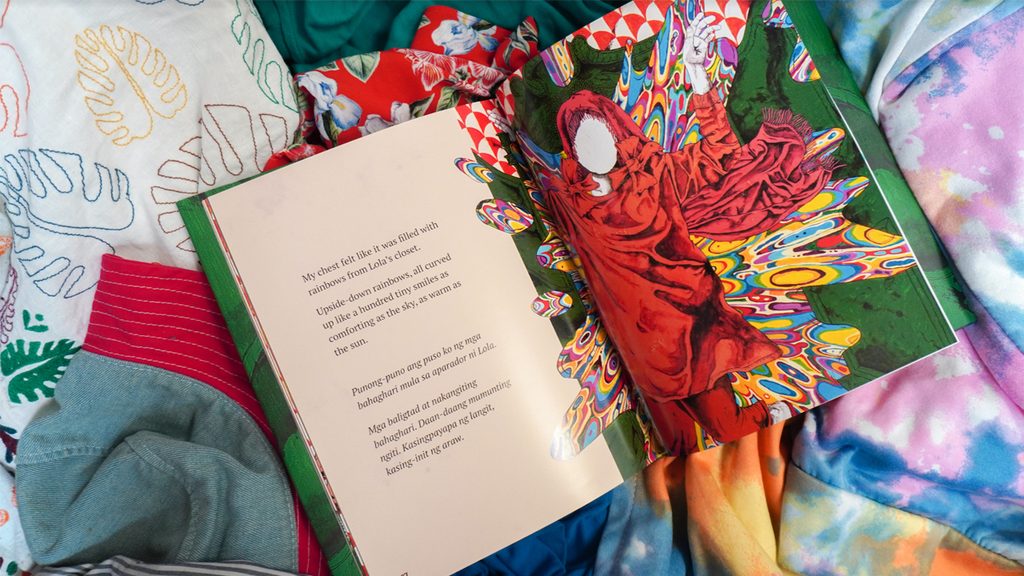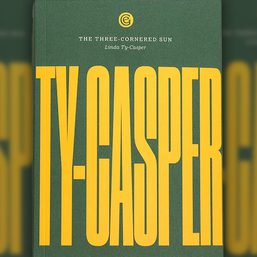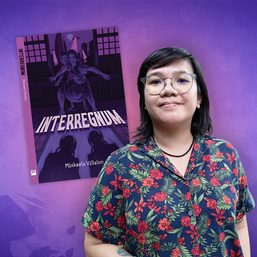SUMMARY
This is AI generated summarization, which may have errors. For context, always refer to the full article.
![[#RapplerReads] Clothes maketh man, or child](https://www.rappler.com/tachyon/2022/02/rappler-reads-i-like-wearing-rainbows-2-february-14-2022.jpg)
Editor’s note: #RapplerReads is a project by the BrandRap team. We earn a commission every time you shop through the affiliate links below. This review also contains spoilers.
How’s your relationship with your clothes?
It’s often said that what we put on makes up part of our first impression on others. We are inevitably perceived by our sense of style, that’s why some of us do “power dressing” – myself included – on important occasions such as presentations, interviews, reunions, and the like. Anything to make us feel prepared to take on the world, or at least, the day ahead.
For others, it’s the other way around; they use clothes to reveal who they really are without any care – their strongest suit, if you will. Each thread and fiber is an extension of their DNA, weaved in to reinforce their personal narrative before the public’s prying eyes.
In Agay Llanera’s I Like Wearing Rainbows, we witness a boy straddling between both, still trying to figure out which side of the coin he falls under. From a first-person point of view, the unnamed boy-narrator innocently discovers the kaleidoscopic world of his lola’s (grandmother’s) closet and wardrobe, until his parents – the first frontiers to the outside world – plaster him with a harsh social construct:
“Boys don’t wear dresses.”

Intertwining Llanera’s naivete with a lyrical Filipino translation by Monica Antonio, the feeling of innocence and budding self-expression suddenly lost was recaptured with deftness, something that the LGBTQ+ community knows all too well. It recalls representations of drag culture to mind, especially on Pose, where glitz and sass are constantly being taken away from vulnerable souls who consider these as their sole source of strength.
Worth noting also was the addition of a maternal dimension to the usual coming out story. Lola’s dresses inspire the boy to enter a colorful world, which would later be his refuge from his hostile father, even after lola’s passing. (Interestingly, “mother” references are frequently made in Pose.) The tale’s resolution even ties back to it as a proverbial bond. This provides a fodder to the nature versus nurture conversation, where an environment can possibly influence an LGBTQ+ child’s behavior and formation – or any kid, for that matter – as much as genetics could. But that’s a debate for another time.
Not to be overlooked are the magnetic illustrations by visual artist Lui Manaig, which, as a colleague described, are reminiscent of tarot cards. He played with colors to evoke the rainbow explosion from lola’s closet, while acknowledging the biting reality of the situation by generously applying shades and shadows here and there, as if something awful can put a stop to the boy’s happiness anytime.
Simple as the story went, I suspected that Llanera intended I Like Wearing Rainbows to be an allegory to coming out rather than being a literal representation. Lola’s wardrobe signifies the limitless potentials that an LGBTQ+ youth can have, whereas the boy’s choice to play within the room after being “found out” is the figurative closet that some prefer to stay in for fear of judgment or ridicule.
Wearing rainbows shouldn’t be treated as peculiar anymore (just like when people go for muted or basic pieces), but society still needs to unpack much of its norms and mores first before fully embracing every person from every spectrum. Otherwise, what would remain is an endless loop of virtue signaling – or tolerance at best – that doesn’t really help the call for diversity.
And like what the boy has experienced, unchecked beliefs can break and prevent a child’s yearning to realize and wear what shade (or shades) feels empowering for him, her, it, or them. – Rappler.com
Get 15% off of your copy of I Like Wearing Rainbows when you order from Looking for Juan’s Lazada store using the code RAPPLER_ILIKEWEARINGRAINBOWS.
Add a comment
How does this make you feel?






![[OPINION] Where are the community libraries 30 years after we passed the law?](https://www.rappler.com/tachyon/2024/06/tl-barangay-public-libraries.jpg?resize=257%2C257&crop=195px%2C0px%2C720px%2C720px)








There are no comments yet. Add your comment to start the conversation.